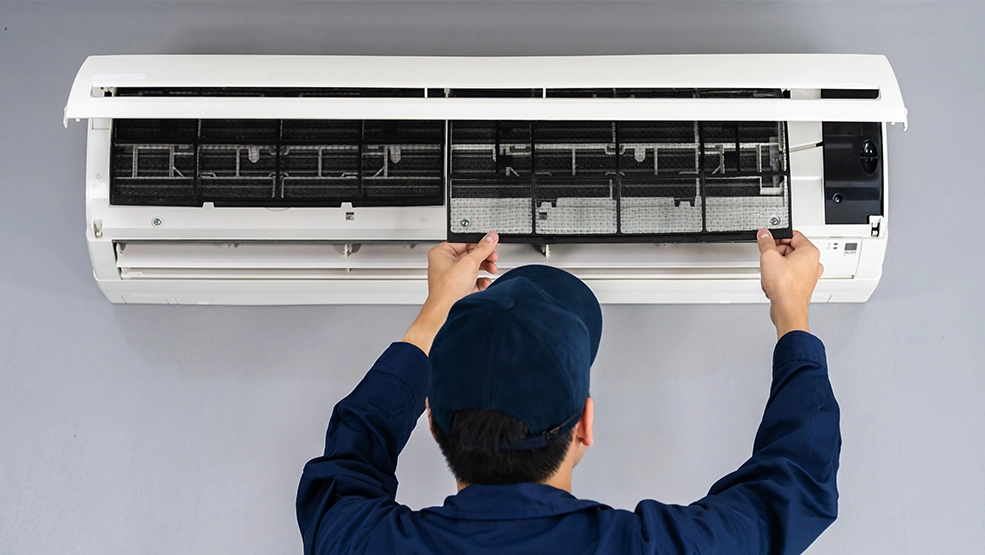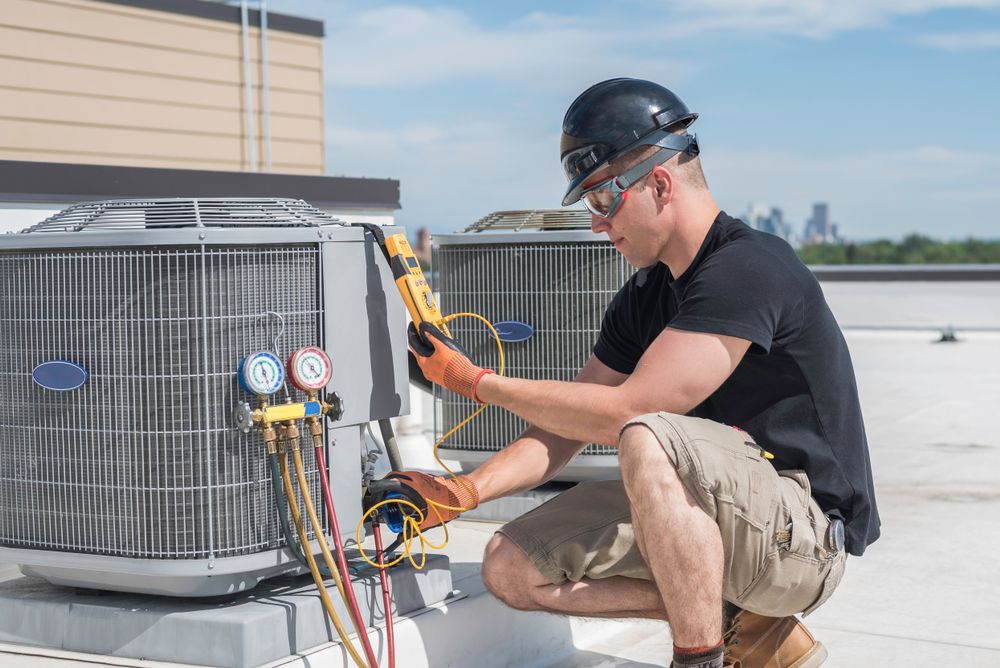The Relevance of Cooling And Heating Setup: Secret Factors To Consider for a Comfortable Indoor Setting
The setup of a Heating and cooling system is a vital component in achieving a comfy and energy-efficient interior environment. Factors such as the suitability of the system for particular structure requirements, correct sizing to prevent inadequacies, and the knowledge of specialists for a high quality installment play essential functions. The adoption of advanced innovations can considerably boost system efficiency.
Picking the Right System

When picking an a/c system, it is important to assess the capacity required to properly warm or cool the space without straining the system, which can result in enhanced wear and functional prices. Consulting with a professional a/c service provider can offer valuable insights right into choosing a system that lines up with both the building layout and the expected usage patterns of the structure.
Additionally, taking into consideration the assimilation of smart modern technology can improve system administration and surveillance, providing greater control and prospective price savings. By meticulously analyzing these variables, one can make sure the option of an a/c system that not just satisfies prompt requirements but additionally adds to long-term operational sustainability and owner convenience.
Recognizing Energy Effectiveness
Understanding power performance is essential when taking into consideration an A/c installment, as it directly impacts both the ecological footprint and the operational expenses of the system. The effectiveness of an A/c system is typically suggested by ratings such as SEER (Seasonal Power Efficiency Ratio) for air conditioners or AFUE (Annual Gas Usage Performance) for heaters.

Spending in an energy-efficient a/c system not just equates to cost savings but likewise contributes favorably to environmental conservation by reducing greenhouse gas discharges. Furthermore, several jurisdictions offer rewards or refunds for the installation of high-efficiency systems, further boosting their economic appeal.
When evaluating power effectiveness, think about advanced features such as variable rate motors, wise thermostats, and zoning capacities. These developments boost the system's capability to get used to differing demand, thereby enhancing power usage. It is important to seek advice from a/c specialists who can give insights right into the most effective alternatives tailored to certain climate problems and use patterns, making sure optimal effectiveness and convenience.
Importance of Correct Sizing

Conversely, an undersized heating and cooling system will certainly struggle to reach the desired temperature level, particularly during severe weather condition conditions. This can result in continuous procedure, bring about higher energy expenses and possible getting too hot of system elements. Furthermore, inadequate sizing can cause irregular temperature distribution, creating specific areas of a structure to be as well amazing or too warm.
To achieve the appropriate sizing, an extensive load estimation is necessary. This involves examining various aspects such as the building's square video, insulation degrees, home window types, and neighborhood climate problems. By precisely identifying the home heating and cooling needs of a space, HVAC specialists can recommend systems that make certain efficient procedure, lowered power usage, and enhanced indoor convenience.

Making Sure Top Quality Installation
A seamless HVAC installment is the keystone of a system's long life and efficiency. This expert must possess in-depth understanding of varied systems and be experienced at analyzing the details demands of the building.
Proper installation exceeds plain positioning of devices. It includes accurate calibration to ensure optimal air movement, reliable power usage, and uniform temperature level circulation. This consists of precise ductwork installation, ensuring links are safe and leak-free, which is critical for keeping system performance and indoor air quality.
Additionally, the execution of advanced analysis devices during installation can identify prospective issues early, stopping costly fixings and prolonging the lifespan of the system. The service provider must also make sure that all components work which the system adheres to neighborhood building ordinance and guidelines.
Regular Upkeep Practices
Once the foundation for a high-performing cooling and heating system is developed via quality installation, the visit this page focus must change to normal maintenance practices to guarantee ongoing efficiency and reliability. Routine maintenance not only prolongs the life-span of the system yet likewise boosts interior air top quality, minimizes power intake, and avoids expensive fixings. Essential maintenance tasks include frequently transforming air filters, cleansing evaporator and condenser coils, and inspecting the system for leaks or blockages.
Air filters should be replaced or cleaned every one to three months, relying on use and ecological aspects. This basic job can substantially improve air circulation and system effectiveness (lawn irrigation installation Brownwood TX). Cleansing the evaporator and condenser coils protects against dirt build-up, which can prevent warm absorption and air conditioning capacity. Additionally, specialist specialists ought to check the system annually, looking for cooling agent levels, electric links, and overall system efficiency.
Attention to ductwork is also essential; sealing and cleaning ducts routinely protects against air loss and contamination. Implementing an upkeep schedule makes certain that minor concerns are dealt with prior to they escalate, protecting the system's operational stability. By sticking to these maintenance methods, homeowners can enhance their HVAC system's capability and maintain a comfortable interior environment year-round.
Final Thought
By selecting an appropriate system customized to specific building requirements, understanding power performance, and making certain appropriate sizing, inefficiencies can be minimized. The involvement of experienced service providers warranties high quality installation, while the integration of innovative modern technologies enhances system performance and monitoring.
Numerous kinds of HVAC systems are offered, including split systems, crossbreed systems, duct-free systems, and packaged heating and air systems, each with distinct benefits and restrictions.
Understanding power performance is crucial when thinking about a Heating and cooling installation, as it straight impacts both the ecological footprint and the operational prices of the system. The effectiveness of a Cooling and heating system is normally suggested by ratings such as SEER (Seasonal Power Effectiveness Ratio) for air conditioners or AFUE (Yearly Fuel Use Performance) for heating systems (Commercial HVAC contractor in Brownwood TX).When the foundation for a see page high-performing A/c system is developed with top quality installation, the focus must move to regular maintenance techniques to ensure continued effectiveness and integrity. hvac service software Additionally, expert technicians must evaluate the system annually, inspecting for cooling agent degrees, electric connections, and general system efficiency